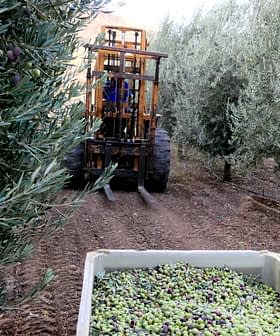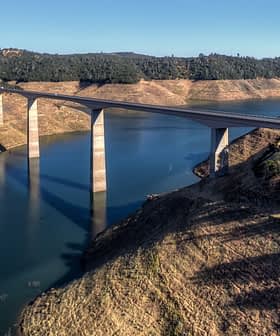Unusual Weather Could Be Problematic for California Olive Crop
A warm winter followed by several spring cold snaps have led to fewer olive trees blooming in central California.
Some unusually hot winter days, coupled with a recent spring freeze, have affected how olive trees are blooming so far this year in California.
This has led some olive producers to have an increasingly pessimistic outlook on this year’s yield, which, according to an unofficial estimate from the California Olive Oil Council, may be 25 to 35 percent lower than last year.
It’s like the trees are confused as to when it is spring. It’s also resulted in a lower bloom than expected overall.
“Overall we’re a little on the pessimistic side. The bloom, on the whole, has been pretty poor, many orchards actually have a very light, to next to no bloom at all,” Dani Lightle, a cooperative extension orchard systems advisor for Glenn County, told the agricultural news site Agnet. “There’s an orchard here or there that looks pretty good, but on the whole, it is a little bit dismal.”
Part of the decrease has been attributed to many of the state’s olive growers entering an off year after a good harvest last year. However, both farmers and scientists agree that the erratic weather patterns have been a factor as well.
“I think the frost was probably one factor,” Lightle told Olive Oil Times. “In this area, bloom was poor in both Glenn and Tehama counties in most orchards that I observed.”
Steve Sibbett is a farm advisor emeritus at the University of California at Davis. He said that while he has not been actively following the weather effects on 2018 crops, temperature fluctuations in the late winter and spring negatively affect olive tree blooms.
“Late winter and early spring frost damage developing fruit buds,” he told Olive Oil Times. “Such an event occurred this past February following a warming spell that encouraged growth to begin. How much damage, if any, is unknown to me and is likely variable due to area.”
Phil Asquith of Ojai Olive Oil, which is located near Santa Barbara in southern California, said that he noticed the impact temperature fluctuations had on his olive trees. He said that the fluctuating temperatures had caused some trees to bloom nearly two months earlier than others.
“Something has affected the bloom here, and we’re seeing a strange phenomenon. Some of our trees bloomed normally, and some about six weeks later,” he told Olive Oil Times. “It’s never been in batches like that, usually all at once. It’s like the trees are confused as to when it is spring. It’s also resulted in a lower bloom than expected overall.”
This year’s temperature fluctuations are similar to what happened in 2006, which was one of the lowest crop sizes for olive growers in the past quarter-century, according to Lightle. However, she said it is still too early to tell if the unusual weather patterns this year will damage the crop to the same extent.
“We actually saw a similar situation around 2006 where there was unseasonably warm weather followed by an extended freeze period, similar to actually what we saw this spring,” she said.
Louise Ferguson, the director of the Fruit and Nut Information Center at UC Davis, said that California’s climate is changing and that temperature fluctuations during the spring and autumn are likely to continue taking place.
“Yes, there will be more temperature fluctuation, [such as a] late warm fall with sudden freezes,” Ferguson told Olive Oil Times. “And erratic warming followed by cold in the spring will damage early bloom and fruit set.”
Ferguson also said that there was very little that farmers can do to mitigate the effects temperature fluctuations other than to plant climate appropriate cultivars and not to irrigate trees too late into the fall.
Richard Meisler of San Miguel Olive Farm agrees that growing the appropriate varietals for each region of California can mitigate the damage caused by these climate fluctuations. His olive trees are located in western-central California, which has a unique microclimate, and he has not noticed a lower bloom than normal.
“San Miguel weather is warmer and colder than surrounding areas. We call it a microclimate,” he told Olive Oil Times. “Our trees are the proper varietals for the Central Coast climate. They can tolerate below freezing temperatures to a degree.”
Meisler also pointed out that each part of the state has a slightly different climate. Therefore, there is no single varietal or set of strategies that can be applied uniformly.
“On a farm in Paso Robles, 10 miles from San Miguel, the climate is just a little different,” he said. “[This year, their] olives are larger than ours, and their trees are loaded. Mother Nature tells the story,” Meisler said.
The California Olive Council will have a board meeting on June 12. One of the topics that may be discussed is the damage caused by this year’s unpredictable weather and what impact it may have on the overall olive yields.








